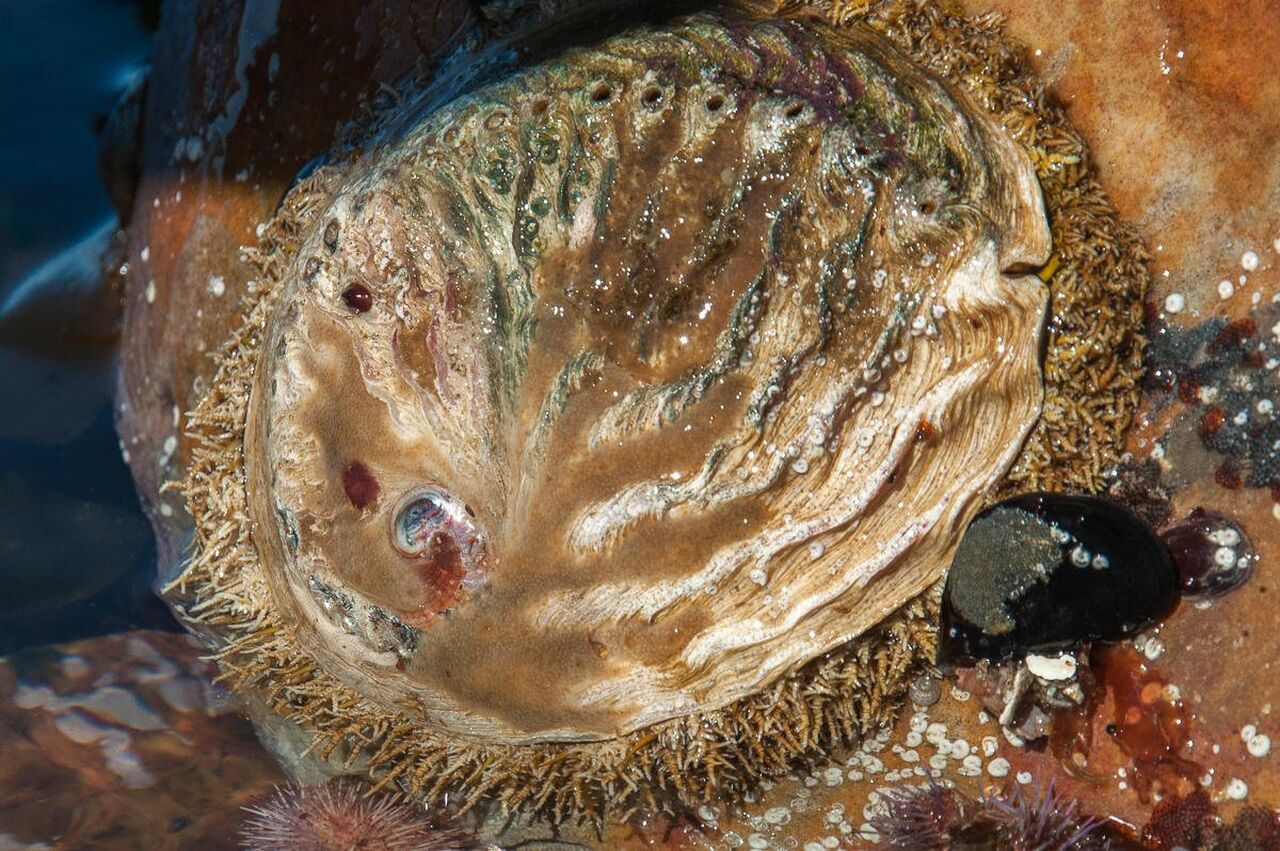Appearance and lifestyle:
Abalone is a type of large snail which lives in the ocean. In South Africa the name abalone refers to Haliotis midae, which we call “perlemoen”. This name comes from the Dutch term Paarlemoer, meaning “mother of pearl”. Abalone has a strong shell with a fleshy inside. They use the neat row of holes – tremata – along the edges of their shells to breathe.
Abalone are slow-growing and take eight to nine years to reach the minimum legal size (114mm shell breadth) at which they can be collected.
Habitat:
Juveniles can be found under boulders or at the bottom of spiny sea urchins and adults can be found in crevices, shallow reefs and or kelp beds.
Diet:
Abalone are herbivores that trap bits of kelp and other seaweeds by clamping down on the plants with their “foot”.
Threats:
The San and Khoi-Khoi first fished for abalone more than 125 000 years ago. In the 1940s, commercial abalone fishery was thriving, but today it is illegal to take perlemoen from the ocean. Abalone is a highly prized delicacy and aphrodisiac in the Far East and fetches steep prices on the black market. Poaching is rife and corruption and drug dealing aggravate the problem further. It is illegal to take abalone from the ocean. Numbers of abalone are now at critically low levels because of over-exploitation. Poaching is the biggest threat to abalone. People in local communities are either paid money or given drugs by large syndicates to illegally remove abalone from the ocean. The abalone is then exported overseas.
If poaching continues at this rate, abalone will soon be extinct in the wild and this will have a devastating impact on the ecological balance of kelp forests as well as on local communities.
